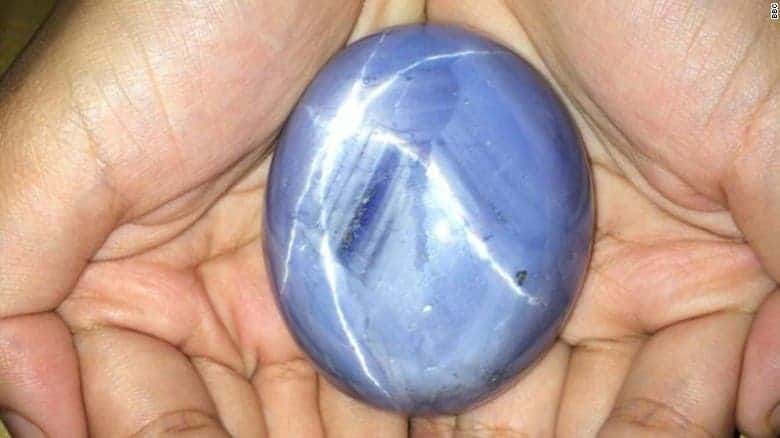Gemologists working in Colombo, Sri Lanka, have confirmed the finding of the largest sapphire in the world. Weighing in at 1,404.49 carats (about 280 grams) it’s worth up to $175 million.

Sapphires are a gem variety of corundum, a crystalline form of aluminium oxide. Corundum typically appears in mica schist, gneiss, and some marbles, but this particular sapphire was formed in granites that slowly cooled down. Mineral scientist Simon Redfern from Cambridge University told the BBC:
“The granites have been dated as almost two billion years old, and were subsequently squeezed and re-worked in a massive metamorphic mountain-building episode that happened more than 500 million years ago,” says Redfern. “Temperatures and pressures deep within the roots of these mountains would have reached more than 900C and over 9000 atmospheres pressure.”
The sapphire itself formed within the granites as they were being reformed and heated. In order for crystals to grow so large, temperatures need to cool down very slowly.
“In either case, the temperatures and pressures would have changed only very slowly over millions and millions of years,” says Redfern. “This is how the crystal was able to grow so big.”
As for the new owner of this sapphire, who refused to be identified, he says this piece belong in a museum, especially as it is too large to fit in any piece of jewelry. It’s also not clear how much he paid for the gem, but as mentioned above, the gem is valued at at least $100 million.
“The moment I saw it, I decided to buy. I suspected that it might be the world’s largest blue star sapphire. So I took a risk and bought it,” the owner told the BBC.






